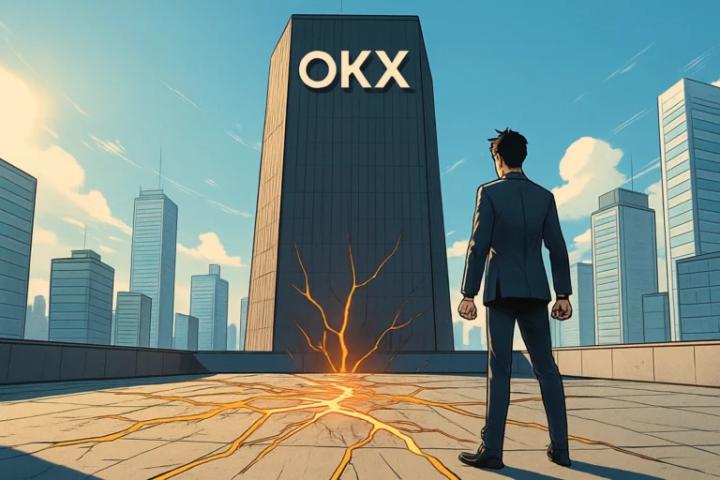On June 3, 2025, the electronic screens in the Wall Street trading hall were suddenly engulfed in a blood-red hue. Bitcoin's price broke through the $110,000 mark, with short positions collectively liquidating within an hour. $2.7 billion flowed frantically into Bitcoin spot ETFs, pushing the price to a historical peak. A Chicago Mercantile Exchange trader muttered while staring at the screen: "This is not a retail frenzy, but a precise slaughter by capital using ETFs as a new weapon."

1 Macro Shift: Policy Tailwinds Ignite Institutional Ammunition
As the Federal Reserve's rate cut signals resonate with cooling inflation, a capital encirclement of the crypto market quietly unfolds. In May 2025, the US core PCE inflation rate dropped to 2.52%, a two-year low. Simultaneously, the Fed released rate cut expectations, with the US dollar liquidity gate about to open. Wall Street keenly captured this signal - $3.03 billion net inflow to BlackRock's Bitcoin ETF in a single week, a yearly record, with Norway's sovereign wealth fund secretly holding 42,000 Bitcoins worth over $4.6 billion.
A deeper policy strategy emerged. The Trump administration appointed PayPal veteran David Sacks as the White House crypto currency director, who quickly pushed the 'GENIUS Stablecoin Act' into implementation. The act mandates stablecoins to be 100% anchored to US Treasury bonds, deeply binding the crypto market to US dollar hegemony. With a $36 trillion US debt crisis looming, Bitcoin is endowed with a "digital gold" strategic position, becoming a new fulcrum of the dollar system.

2 Short Squeeze: ETF Becomes Wall Street's New Weapon
Traditional short-selling forces retreated before the ETF's suction effect. On June 3, $2.7 billion in ETF funds precisely targeted three key weak points:
2.1 Liquidity Trap: When shorts tried to sell at $105,000, BlackRock IBIT's market makers instantly consumed all sell orders, compressing bid-ask spread to 0.01%
2.2 Volatility Taming: S&P 500 component stock funds incorporated Bitcoin into hedging portfolios, suppressing historical high volatility
2.3 Technical Breakthrough: Whales secretly accumulated 18,000 BTC in the 24 hours before breakthrough, forming a golden cross technical pattern
The Fear and Greed Index dramatically reversed: soaring from 39 (fear) to 73 (greed) within 48 hours. When 170,000 short accounts turned red on the on-chain liquidation map, a total of $572 million evaporated. A hedge fund manager who had shorted MicroStrategy wryly smiled: "We're not fighting crypto, but the US dollar flood channeled through ETFs."
3 East-West Confrontation: The Hidden Line of Asian Retail and European-American Institutional Gambling
In this capital feast, geographical competition subtly emerged. Data shows Asian trading sessions contributed 58% of trading volume, but capital flows presented a stark contrast:
- Eastern Strategy: Chinese and Korean retail traders used Binance contracts with up to 125x leverage, chasing meme coin volatility dividends of Trump, MAGA, etc.
- Western Chess: BlackRock used ETF shares as collateral to sell put options on the Chicago Options Exchange, achieving "zero-cost positioning"
This division reflects structural market transformation. Former decentralization believers discovered that Bitcoin's on-chain active addresses paradoxically dropped 17% during the surge - ETFs are draining the soul of the spot market.
> A new Wall Street trader saying emerged: "Buy code, not tokens; read quarterly reports, not white papers."
4 Conspiracy Unveiled: Trump Administration's Bitcoin Strategy
Political power and capital converged at this moment. The Trump family-controlled World Liberty Financial secretly accumulated 32,000 Bitcoins through over-the-counter markets a week before the price breakthrough. Simultaneously, Trump shouted on social media: "Not a single Bitcoin to be sold!" - seemingly calling for holding, but actually squeezing liquidity.
A deeper national strategy emerged. With the US controlling only about 200,000 Bitcoins (10% of circulation), urgently needing millions to control pricing rights. A former White House economic advisor revealed an internal two-step strategy:
- Short-term short squeeze: Use regulatory relaxation to attract counterparties, then use ETF channels to explode shorts
- Long-term hoarding: Adjust tax laws to force institutions to hold long-term, targeting 30% circulation control
This operation directly addresses the US dollar hegemony crisis. $35 trillion in national debt adds $1 trillion every 100 days, the petrodollar system is betrayed by Saudi Arabia, and gold reserves are being repatriated by multiple countries. As Bitcoin's total market value breaks the 10% gold threshold, it officially becomes a new anchor for the dollar system.
5 Hidden Thunder: Ecosystem Fragmentation Behind the Carnival
Beneath the capital feast, the crypto market is undergoing genetic mutation. Stablecoin total market value dropped 37% from the 2024 peak, with Altcoin trading volume on CEX hitting a three-year low. The former "Altcoin season" transmission mechanism has completely fractured - when BlackRock CEO Larry Fink calls for a $70,000 target price, funds only remain in the IBIT trust, no longer flowing to Uniswap or Solana ecosystems.

The collapse of security defenses is even more chilling. In May, hackers stole assets totaling $182 million, with North Korean hackers using "wrench attacks" to interrogate high-net-worth token holders, robbing $5.2 million in a single incident. As Coinbase faces a $400 million lawsuit for customer data leakage due to bribery, the decentralization ideal crumbles before centralized vulnerabilities.
6 Endgame Deduction: Tamed Bitcoin and the Disappearing Crypto Spirit
Standing at the $110,000 peak and looking back, Satoshi Nakamoto's white paper is yellowing in Wall Street vaults. As Bitcoin's 30-day volatility drops to traditional tech stock levels, and ETF holdings exceed miner reserves, a cruel fact has emerged: Bitcoin's financialization is essentially traditional capital's co-optation.
The crypto world once shouted "banks are untrustworthy", but now BlackRock builds a new power center with $55.38 billion in ETF management; blockchain claimed "resistance to censorship", yet the GENIUS Act turns every stablecoin into a US bond carrier. > Capital never sleeps, but freedom needs to breathe. As $2.7 billion in ETF ammunition blasts open the $110,000 door, Satoshi Nakamoto's ghost whispers in the block reward: Is this Bitcoin's victory, or Wall Street's ultimate pacification of the crypto uprising?







